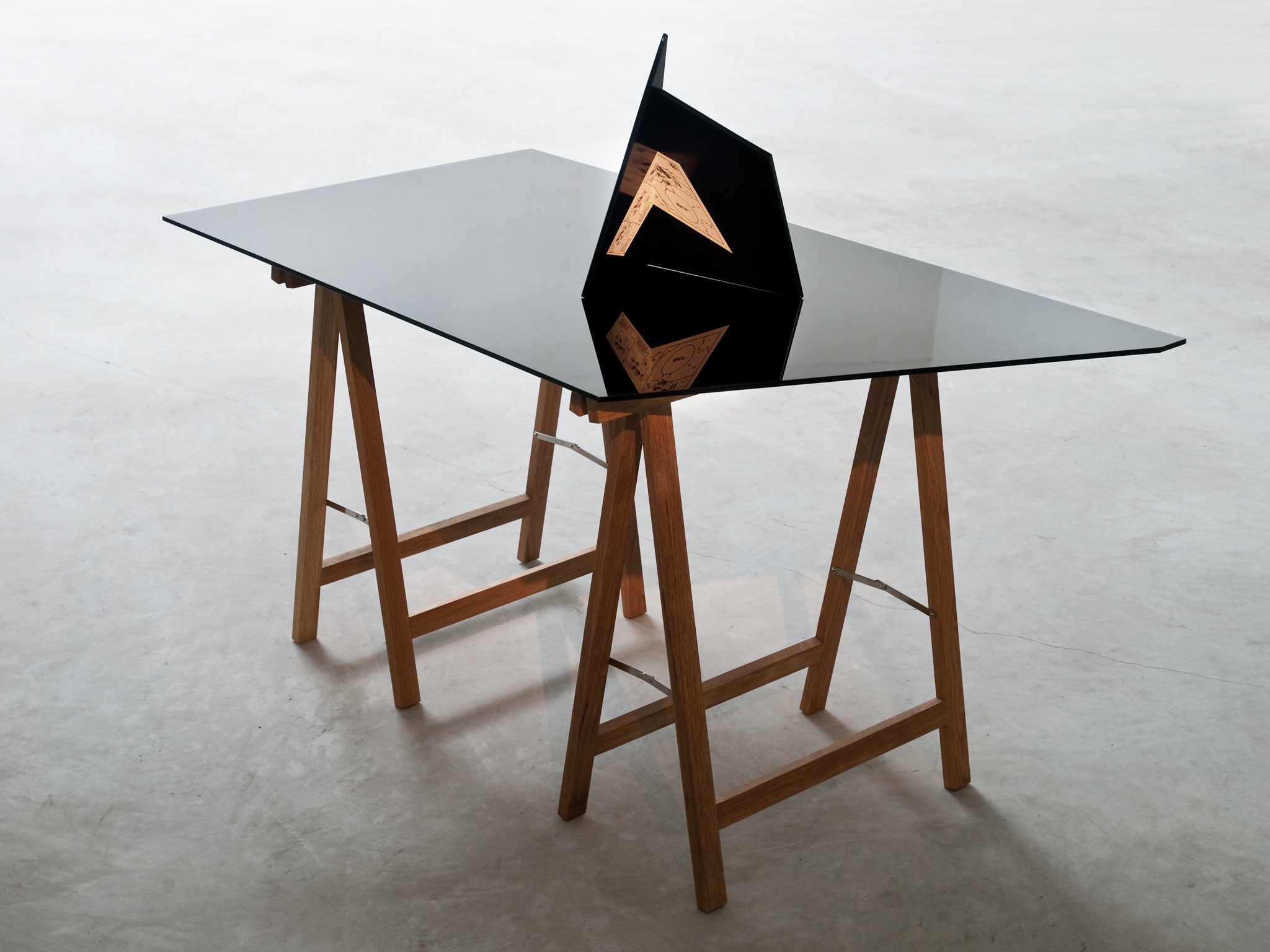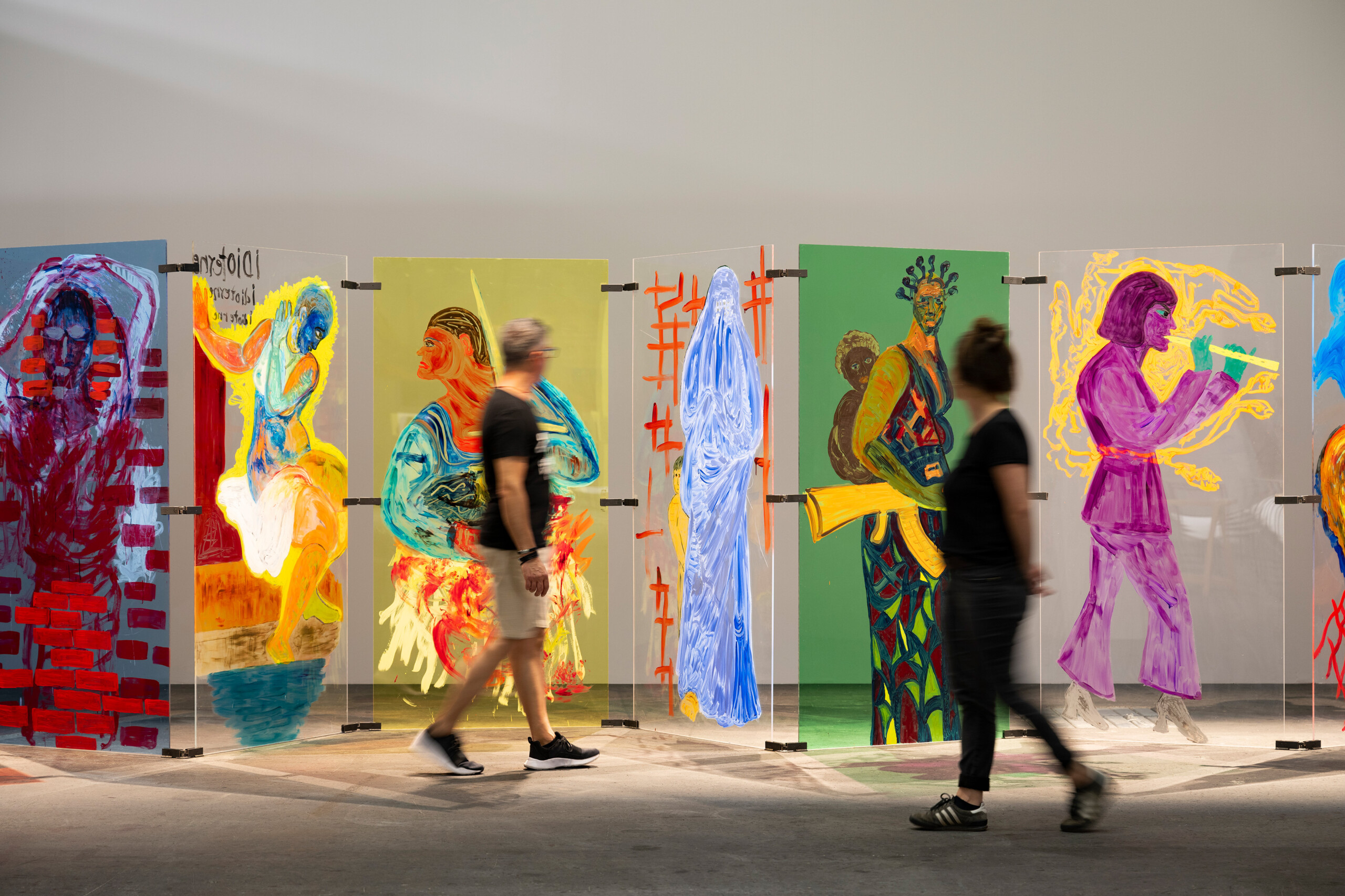3 Things to know about Andrew Bick
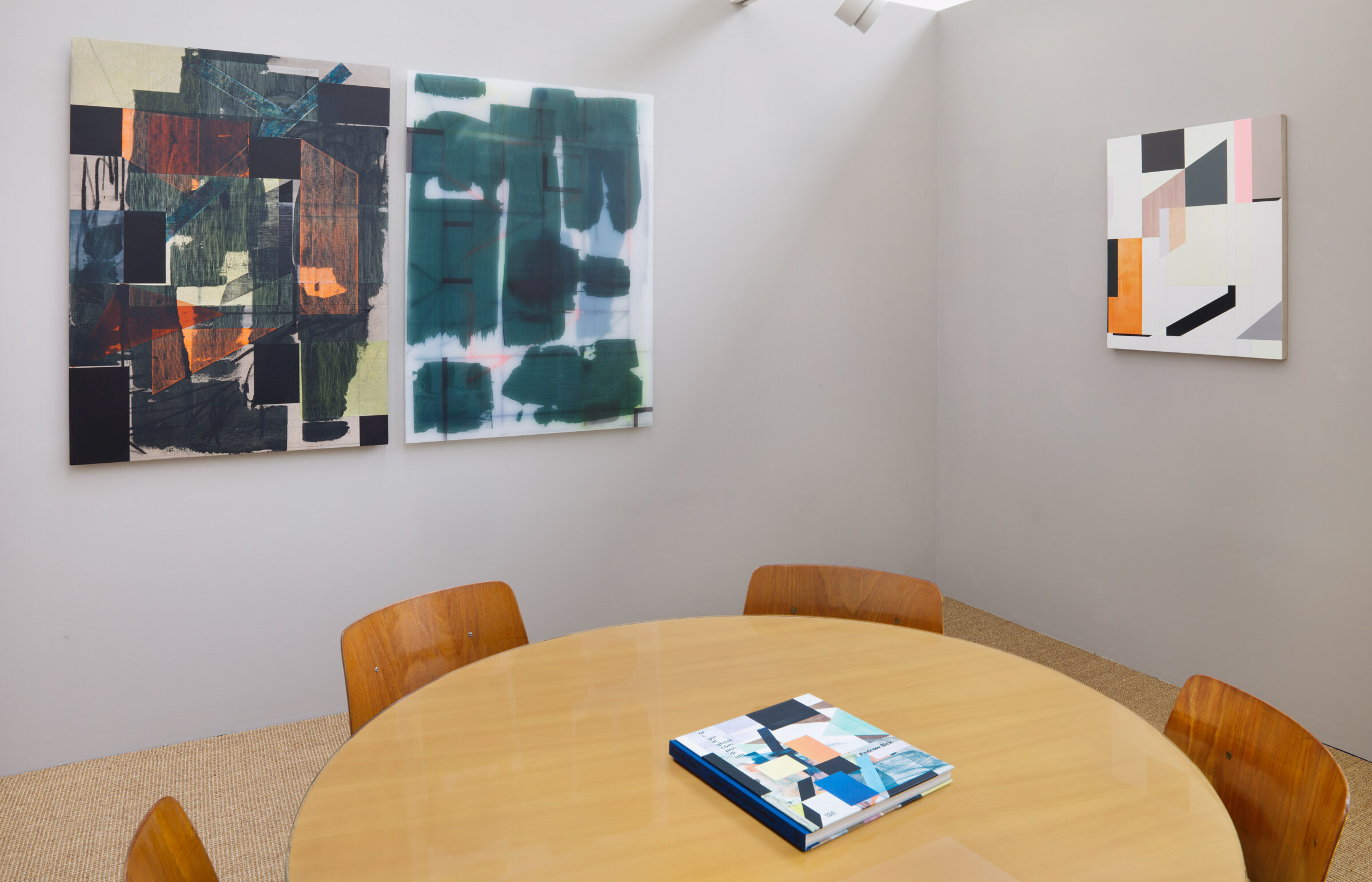
A new monograph on the British artist provides fresh insight into his varied practice. Here, we share three excerpts from 'Original Ghost Compendium'
Curation, and exploring overlooked histories, are central to Bick’s practice
‘Bick’s principle output is painting, for which he is better known, but his work also includes site-specific installations, printmaking, photography, artists’ books, writing, teaching and curating. A core element of Bick’s practice is a durational and reflexive sense of its own unfolding that may stem as much from his engagement with architecture, and the inhabitation of spaces, as from his interest in film and music. Curation in its broadest sense is a large element of Bick’s thinking and conceptual strategy. This incorporates the notion of responsibility implied by the now old-fashioned term ‘keeper‘. Prior to the 1970s, when artists began to take strategic control of exhibition management, museums employed keepers who were custodians of the collections and it fell to them to organise the displays. Inherent in the keeper’s role was a self-effacing responsibility to bring attention to the work of artists whose relevance had been overlooked. This attitude prevails in Bick’s thinking. He is immersed in a hands-on investigation of histories of Constructivism, Concrete poetry and system art. He is a keeper of these histories, which become part of the material that drives the production of meaning in his work.’
Excerpt from ‘Sychronicities, Wordplay and Incidental. Networks and in Constellations in Andrew Bick’s Practice‘ by Jo Melvin, writer and curator, as well as Reader in Fine Art and Archives University of the Arts, London
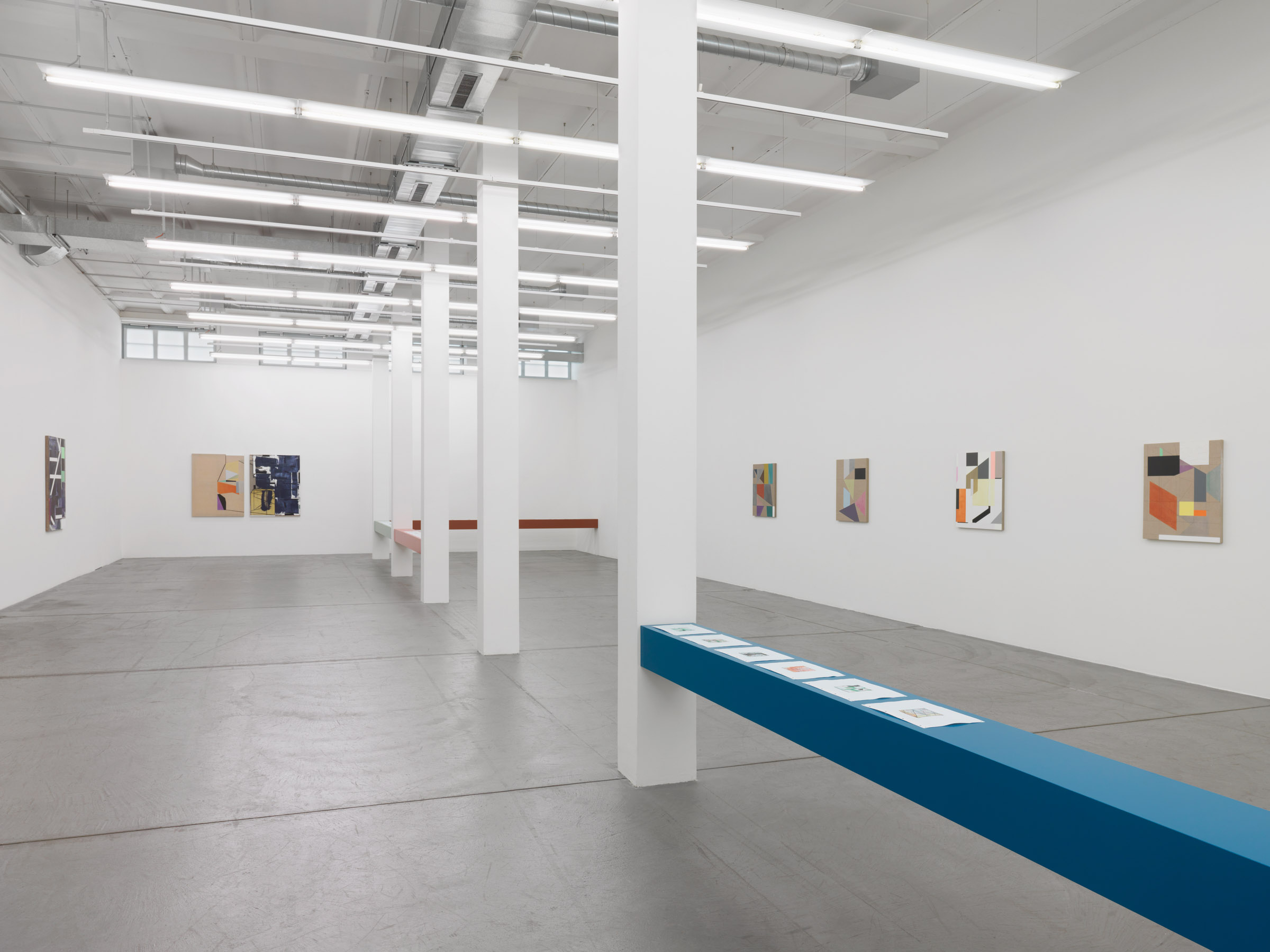
double/echo
Exhibition view at Museum Haus Konstruktiv, Zürich, 2017
Photo: Stefan Altenburger
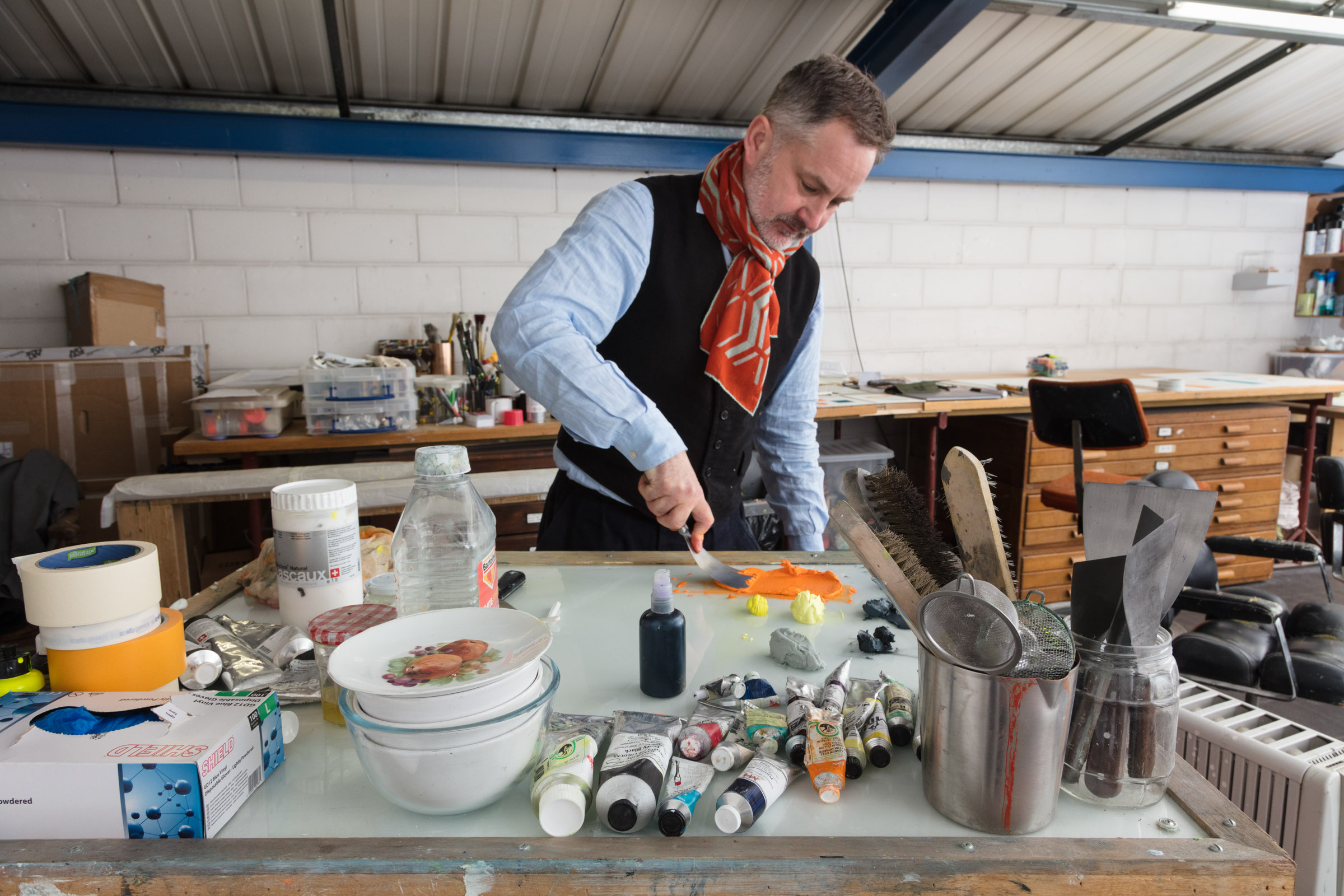
Photo: Angus Mill
He believes creators working across disciplines could learn from each other
‘These earlier exhibitions and statements are worth mentioning today […] as they highlight preoccupations that would continue to occupy Bick in the following decades: preoccupations both with intermediate relations seen through a Constructivist lens and with the productive ways in which artists, teachers and students might relate to one another and participate in a shared discourse about art. Looking back both at Bick’s early and later work, we find time and time again evidence of an artist with a congregational, communal sensibility, continually working between and across boundaries, ideas and approaches: between Britain and Europe, between painting and sculpture, between tradition and the new, between generations of teacher and student, between rationality and irrationality, between chance and order and between Dada and Constructivism.’
Excerpt from ‘Art, Research and the Fellowship of Artists’ by John Wood, independent art historian and curator
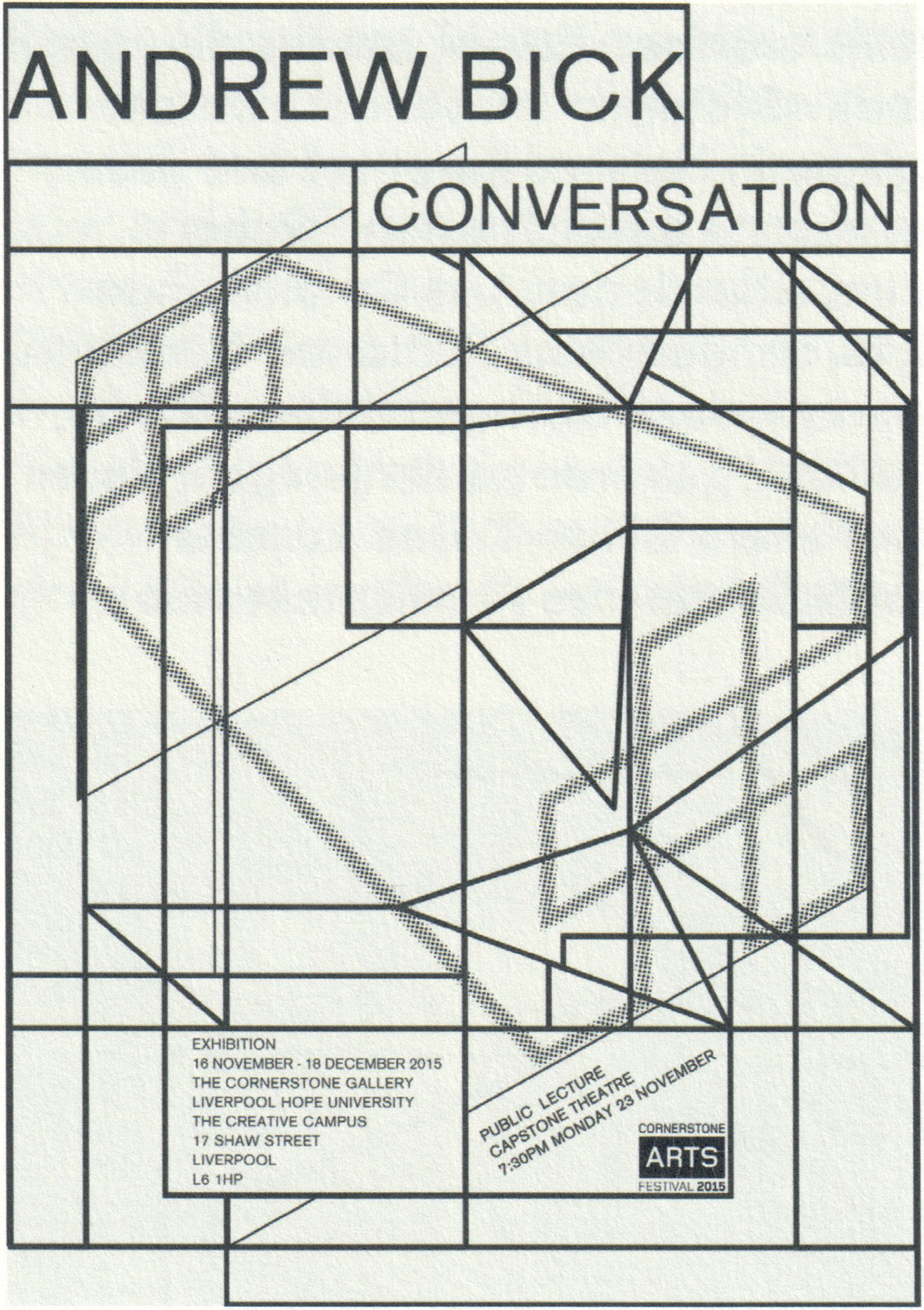

Winged Net, Shadow Trace, Yellow and Blue, 1976
Arts Council Collection
He is inspired by the optical phenomena achieved by artists including Gillian Wise
’I was incredibly moved by her [artist Gillian Wise’s] ideas of the grid when I first saw a drawing of hers from the Arts Council Collection (see above). I then borrowed that same drawing for an exhibition I curated at Leeds Art Gallery in 2010, at the same time that I started considering the idea of what this grid implies in my own work. Along with Anthony Hill, Wise was making relief constructions consisting of two parallel picture planes, a back plane, which might be black Plexiglas, and a clear Plexiglas front plane, which might have grid lines etched into it. The two would be floated apart by around 30mm, simply using screws and a tubular metal spacer at each corner. What Gillian started to do was to drill holes in the front plane and stretch elasticated cord between it and the black back plane, forming an expanded grid. The difference thus generated being that the angles of a regular grid structure stretched across the 30mm gap actually distorted the square and created a spatial perspective that became very ambiguous. What she then started doing was making prints and drawings of these constructions, that were, in effect, illustrations of an optical phenomenon created originally in three dimensions. In these works, the grid starts to almost fly. The metaphor of it floating into a new space becomes a crucial aspect of how it functions. Like an isometric drawing it implies a form of perspective, it is not flat.’
Excerpt from ‘Every Night in the World is Concrete’ an Interview between Andrew Bick and Sabine Schaschl, director art Museum Haus Konstruktiv, Zurich, 9th November 2018
- A recent review of the book is now online at International Times
- Excerpts from Schaschl, Sabine/Stiftung für konstruktive, konkrete und konzeptuelle Kunst, Museum Haus Konstruktiv, Zürich (Publisher): Original Ghost Compendium. Andrew Bick, Hatje Cantz Verlag, 2020

Andrew Bick

OGVDS-GW [double echo], 2003-2016
L: Acrylic, pencil, oil paint, marker pen and wax on linen on wood
R: Acrylic, marker pen on cnc machined Perspex
Each panel 122 x 90 x 3cm
![OGVDS-GW [detail] D](https://backend.vonbartha.com/wp-content/uploads/2021/03/OGVDS-GW-detail-D.jpg)
OGVDS-GW [Detail] C, 2017
Acrylic, pencil, oil paint, watercolour and wax on linen on wood.
76 x 64 x 3.5 cm


